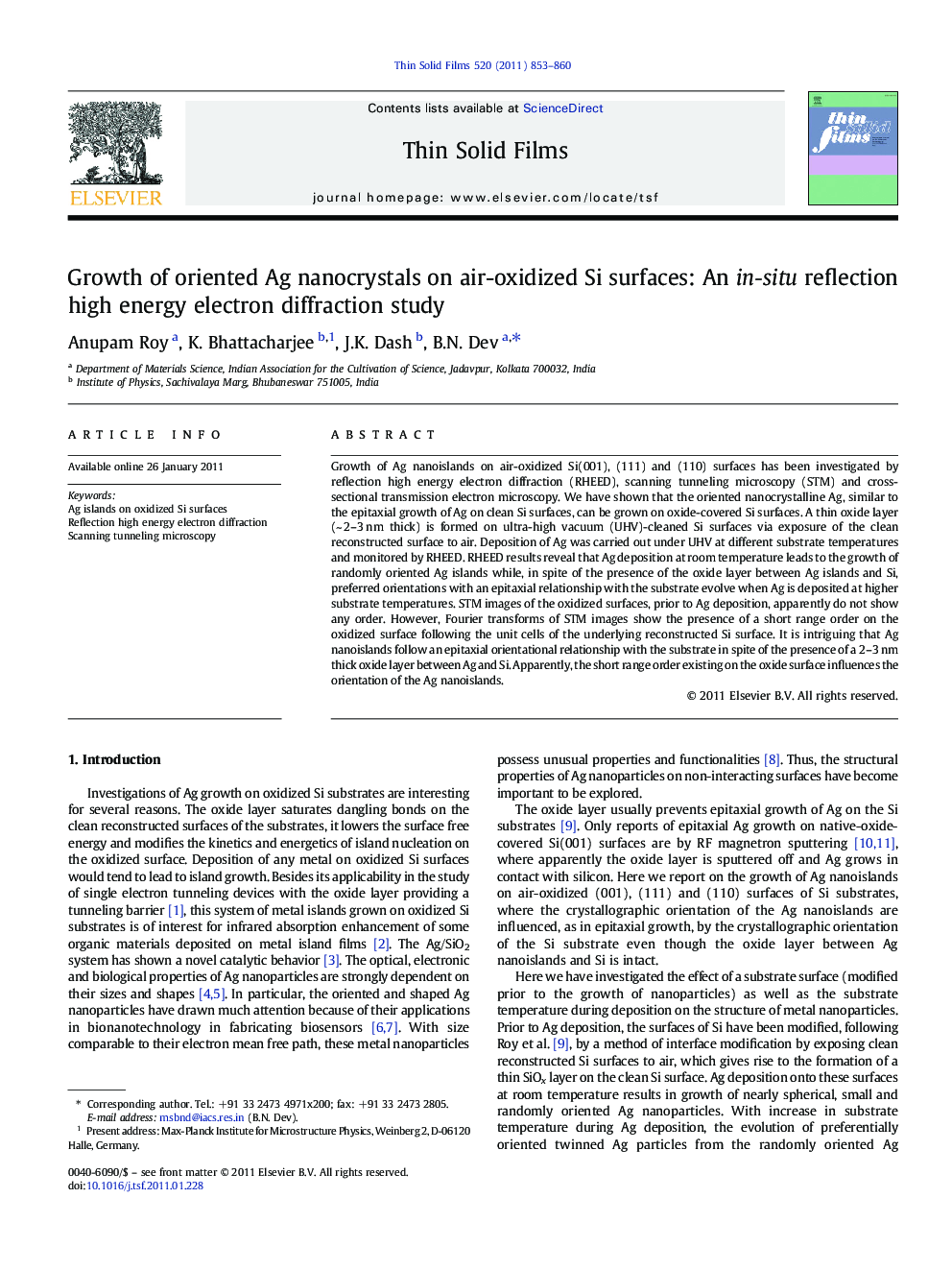| Article ID | Journal | Published Year | Pages | File Type |
|---|---|---|---|---|
| 1668372 | Thin Solid Films | 2011 | 8 Pages |
Growth of Ag nanoislands on air-oxidized Si(001), (111) and (110) surfaces has been investigated by reflection high energy electron diffraction (RHEED), scanning tunneling microscopy (STM) and cross-sectional transmission electron microscopy. We have shown that the oriented nanocrystalline Ag, similar to the epitaxial growth of Ag on clean Si surfaces, can be grown on oxide-covered Si surfaces. A thin oxide layer (~ 2–3 nm thick) is formed on ultra-high vacuum (UHV)-cleaned Si surfaces via exposure of the clean reconstructed surface to air. Deposition of Ag was carried out under UHV at different substrate temperatures and monitored by RHEED. RHEED results reveal that Ag deposition at room temperature leads to the growth of randomly oriented Ag islands while, in spite of the presence of the oxide layer between Ag islands and Si, preferred orientations with an epitaxial relationship with the substrate evolve when Ag is deposited at higher substrate temperatures. STM images of the oxidized surfaces, prior to Ag deposition, apparently do not show any order. However, Fourier transforms of STM images show the presence of a short range order on the oxidized surface following the unit cells of the underlying reconstructed Si surface. It is intriguing that Ag nanoislands follow an epitaxial orientational relationship with the substrate in spite of the presence of a 2–3 nm thick oxide layer between Ag and Si. Apparently, the short range order existing on the oxide surface influences the orientation of the Ag nanoislands.
